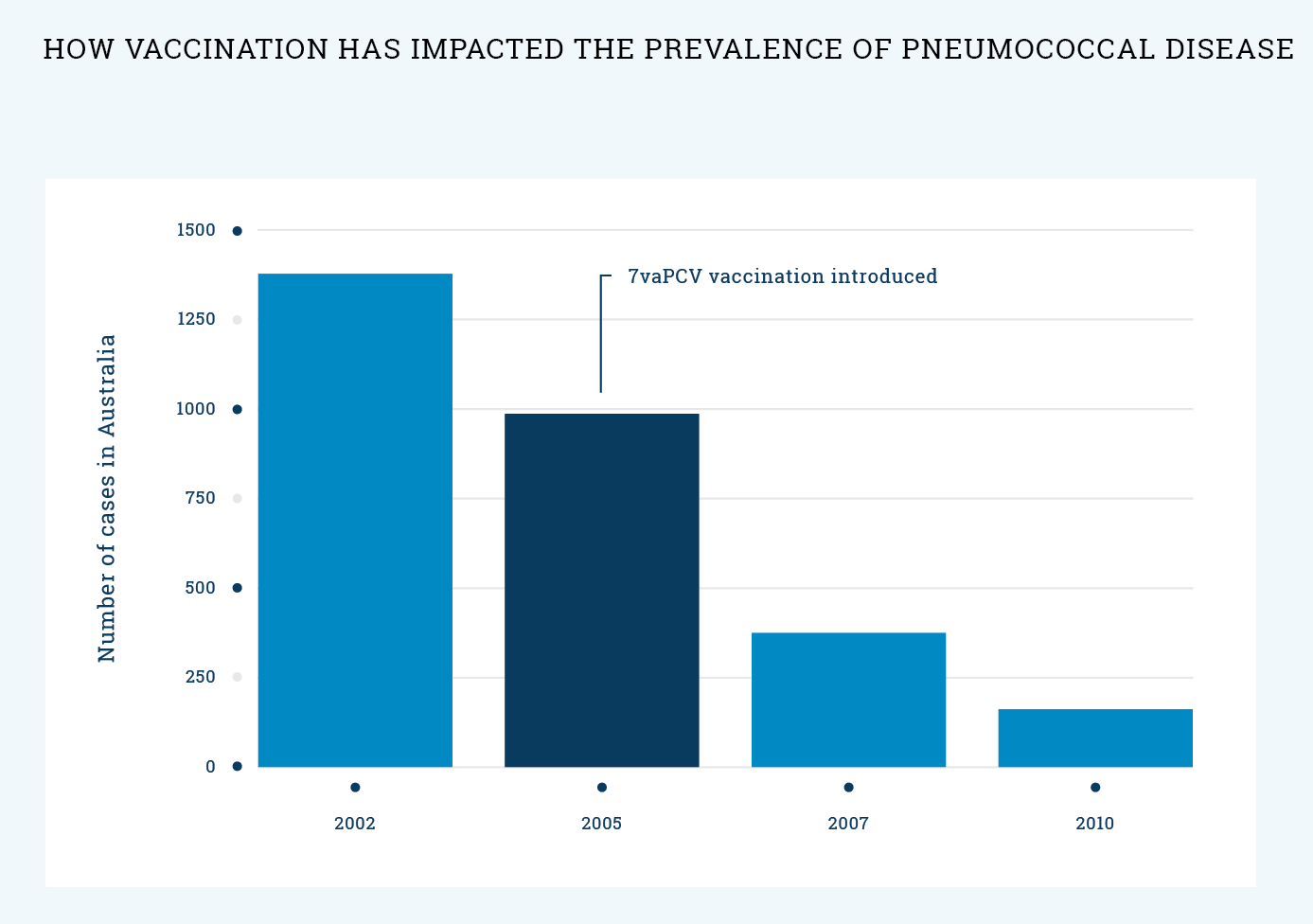Pneumococcal disease
Key facts
-
Pneumococcal disease can cause inflammation around the brain (meningitis), infection in the lungs (pneumonia), ear infections that can damage hearing and other serious diseases.
-
Some adolescents have certain health or medical conditions that put them at risk for pneumococcal disease. These adolescents are recommended to get additional vaccine doses to protect them against pneumococcal disease. These adolescents are recommended to receive one dose of a pneumococcal vaccine (20vPCV) to protect them against pneumococcal disease.
On this page
- What is pneumococcal disease?
- What will happen to my adolescent if they catch pneumococcal disease?
- What vaccine will protect my adolescent against pneumococcal disease?
- When should my adolescent be vaccinated?
- How do pneumococcal vaccines work?
- How effective are pneumococcal vaccines?
- Will my adolescent catch pneumococcal disease from the vaccine?
- What are the common reactions to the vaccine?
- Are there any rare and/or serious side effects to the vaccine?
- What impact has vaccination had on the spread of pneumococcal disease?
- What if I still have questions?
